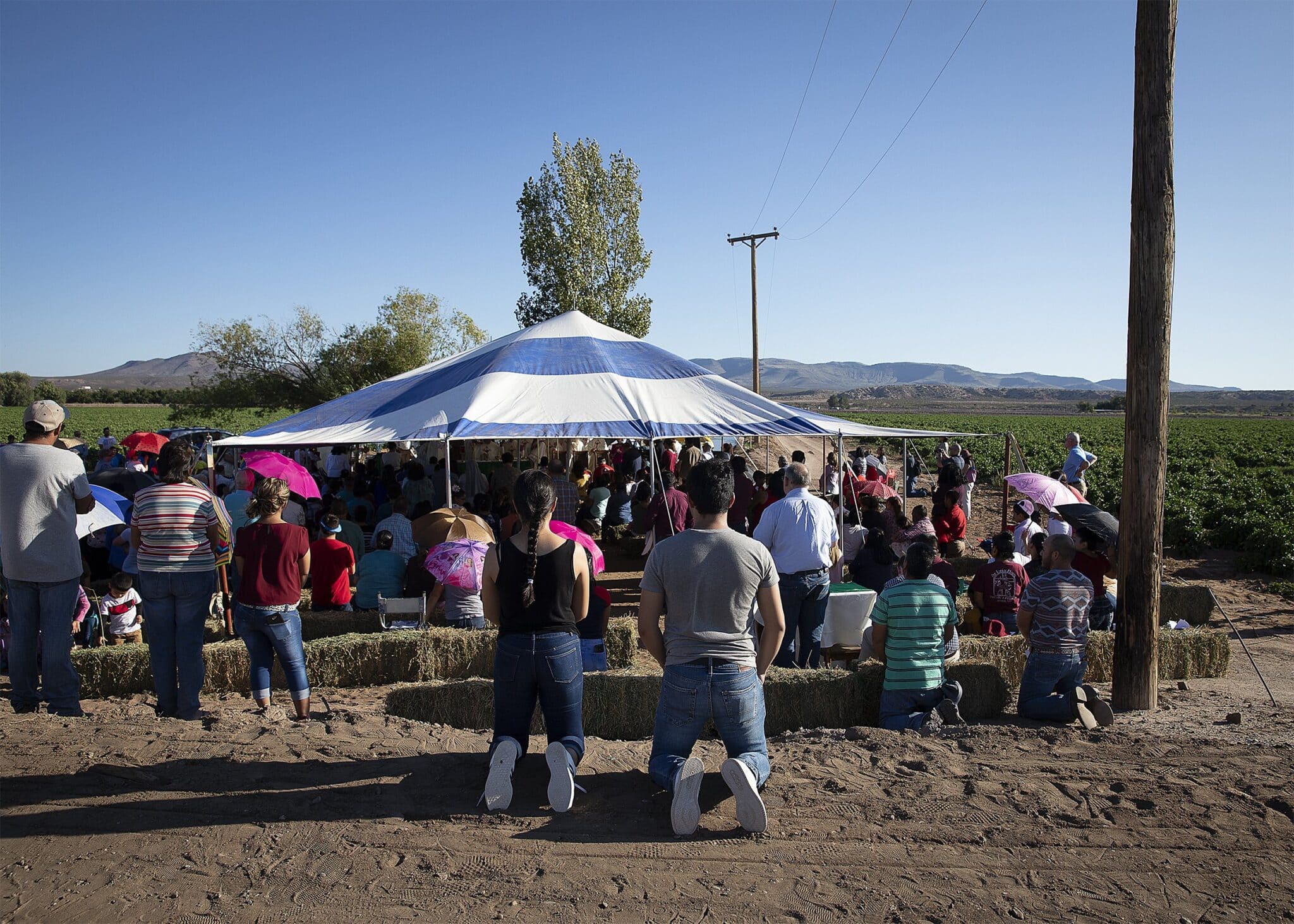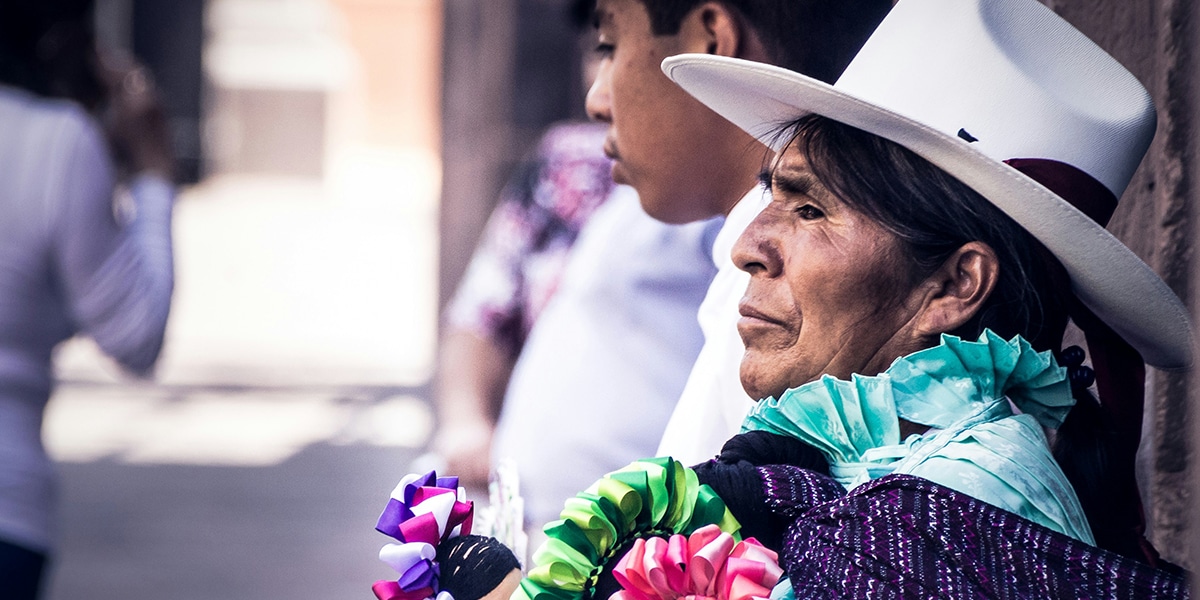This beloved story has a lot to teach us about peacemaking in our own times.
The story of how St. Francis of Assisi tamed the Wolf of Gubbio is one of the great legends linked with the life of the saint. I have never been too worried as to whether the story was historically true or not. I am more interested in seeing how the story fits into the pattern of biblical themes and of God’s plans for creation. In this well-known legend, St. Francis goes to the Italian town of Gubbio, where a fierce wolf had been terrorizing the village and even killing some of the people, including children.
During his visit to Gubbio, Francis goes out to meet the wolf. You can find an account of this event in The Little Flowers of Saint Francis, a 14th-century collection of stories about Francis and his companions. According to the story, when the wolf sees St. Francis, he comes charging at the saint with his mouth open, ready to attack.
St. Francis immediately makes the sign of the cross over him and says, “Come here, Brother Wolf. I command you on behalf of Christ that you do no harm to me or to anyone.” As soon as St. Francis did this, notes The Little Flowers, “the fearsome wolf closed his mouth and stopped running; and once the command was given, it came meekly as a lamb, and threw itself at the feet of St. Francis.”
Francis Cuts a Deal with the Wolf
Then St. Francis scolds Brother Wolf for destroying and killing the creatures of God. “The whole town is complaining about you,” Francis tells the wolf gently. “But I want to make peace between you and the people. And so I promise that I will have food given to you regularly, Brother Wolf, by the people of this town so that you will no longer suffer hunger. And I want you, Brother Wolf, to promise that you will never harm any human person or animal.” The wolf showed agreement by simply bowing his head.
And so Francis asks the people of the town if they will promise to provide food for wolf regularly. They all say they will. Finally, St. Francis asks the wolf to give a guarantee in front of all of the people that he will no longer inflict harm upon the people of Gubbio or its animals.
“Then the wolf, lifting his right paw, placed it in the hand of St. Francis. Because of this action…there was such rejoicing and wonder among all the people…that they all began to cry to heaven, praising and blessing God who sent Francis to them who, through his merits, had freed them from the jaws of the cruel beast.”
“Afterwards that same wolf lived in Gubbio for two years, and he tamely entered the houses, going from door to door, without doing any harm to anyone and without any being done to him; and he was kindly fed by the people….Finally after two years Brother Wolf died of old age, at which the citizens grieved very much.”
Echo of the ‘Peaceable Kingdom’
The “peaceable kingdom” is an expression of the messianic era of peace, foreseen by the prophet Isaiah in this famous passage: “Then the wolf shall be a guest of the lamb, and the leopard shall lie down with the kid; the calf and young lion shall browse together, with a little child to guide them” (11:6).
Another passage of Isaiah reads, “The wolf and the lamb shall graze alike, and the lion shall eat hay like the ox….None shall hurt or destroy on my holy mountain, says the Lord” (65:25).
It is clear that the inspired writer of the Book of Revelation, the final book of the Bible, was referring to the “peaceable kingdom” when he wrote, “Then I saw a new heaven and a new earth….I also saw the holy city, the new Jerusalem, coming down out of heaven from God, prepared as a bride adorned for her husband. I heard a loud voice from the throne saying, ‘Behold, God’s dwelling is with the human race….He will wipe away every tear from their eyes, and there shall be no more death and mourning, wailing or pain, [for] the old order has passed away” (Rev 21:1-4).
Surely the inspired writer of Revelation, whom we know as John, is pointing us back to Isaiah’s description of the rise of the messiah: “But a shoot shall sprout from the stump of Jesse [David’s father], and from his roots a bud shall blossom. The spirit of the Lord shall rest upon him: a spirit of wisdom and understanding….He shall judge the poor with justice, and decide aright for the land’s afflicted….Then the wolf shall be guest of the lamb, and the leopard shall lie down with the kid” (see Isaiah 11:6-9). As a footnote of the Catholic Study Bible tells us, “this picture of the idyllic harmony of paradise is a dramatic symbol of the universal peace and justice of messianic times” (p. 891).
Harmony, Interrupted
What Isaiah is showing us here is a vision of a future era in which the original state of peace and harmony in the Garden of Eden, lost through disobedience and sin, is restored. In this new world, there will be no pain or sorrow or enmity or untimely death, only happiness and rejoicing.
Even the animals will return to a state of innocence and bliss….Clearly the author of Revelation goes out of his way to show that, just as the first book of the Bible [Genesis] began with an ideal garden paradise where God, humans and beasts dwelt peacefully together, so now the Bible’s final book ends with the original garden of harmony and peace restored.
In part, what the story of Francis and the wolf reveals to us is that St. Francis—as a follower of Christ, the Messiah foretold by Isaiah—is helping to bring about the same peace and reconciliation in this world. This peace, harmony and reconciliation is not only meant to exist between God and humans, but also between God and the whole family of creation! We, too, can be instruments of peace.









2 thoughts on “St. Francis and the Taming of the Wolf”
But the meat eater so called Christians are polluting the world most. So they suffer from terrible deseases.
But giving up meat and milk like early friars I live Hale and active in my 85 years.
I 100% agree with you!!! All humans need to stop killing and eating animals!!